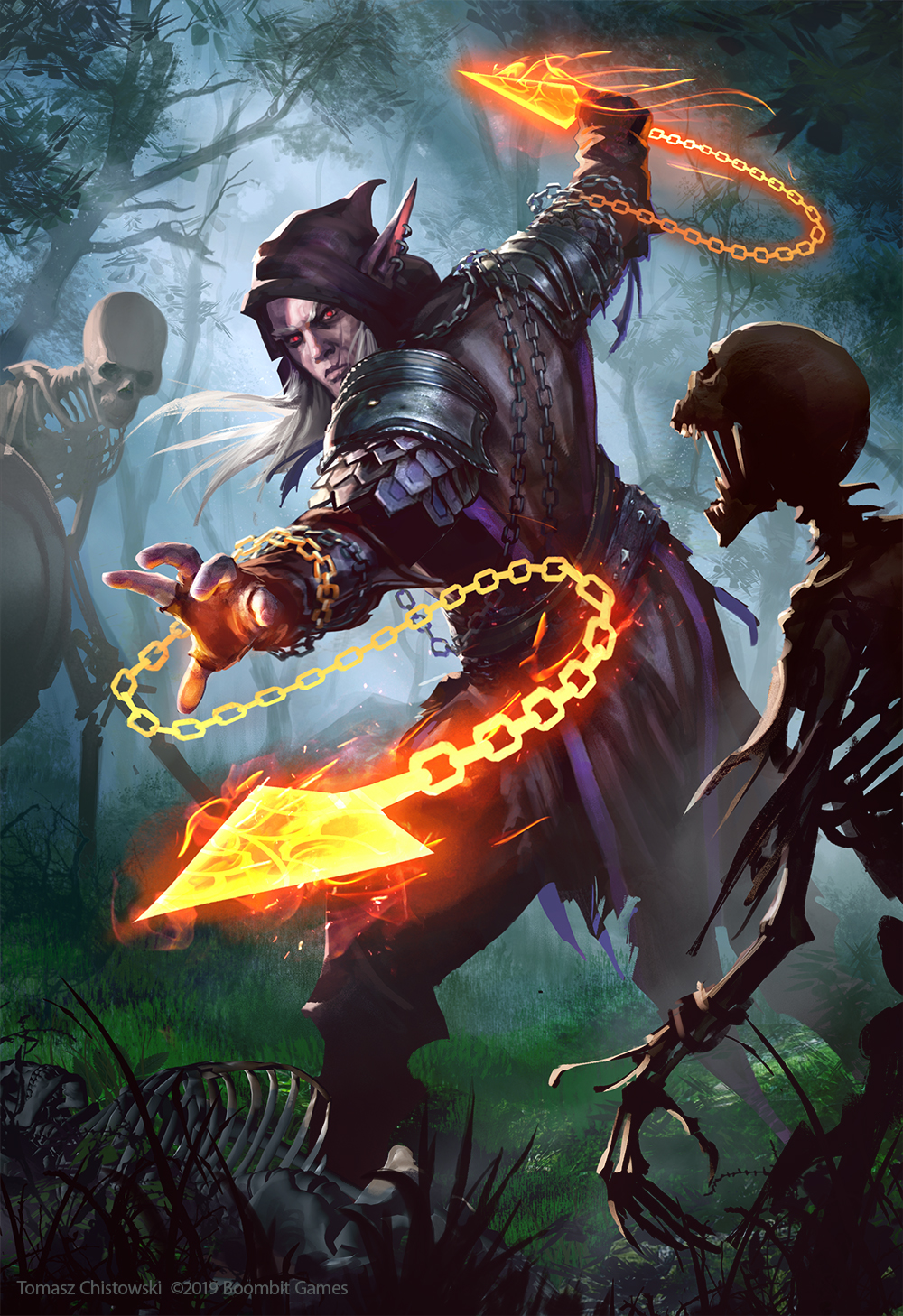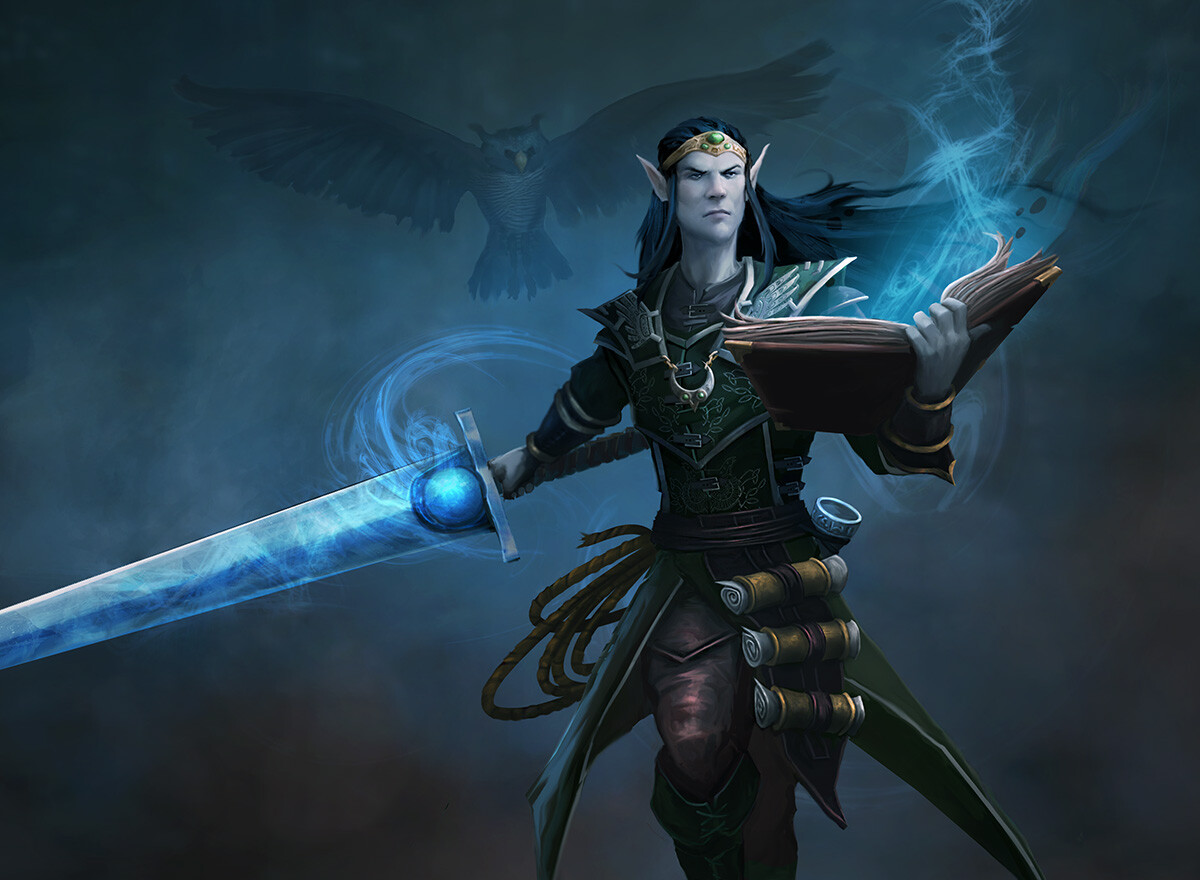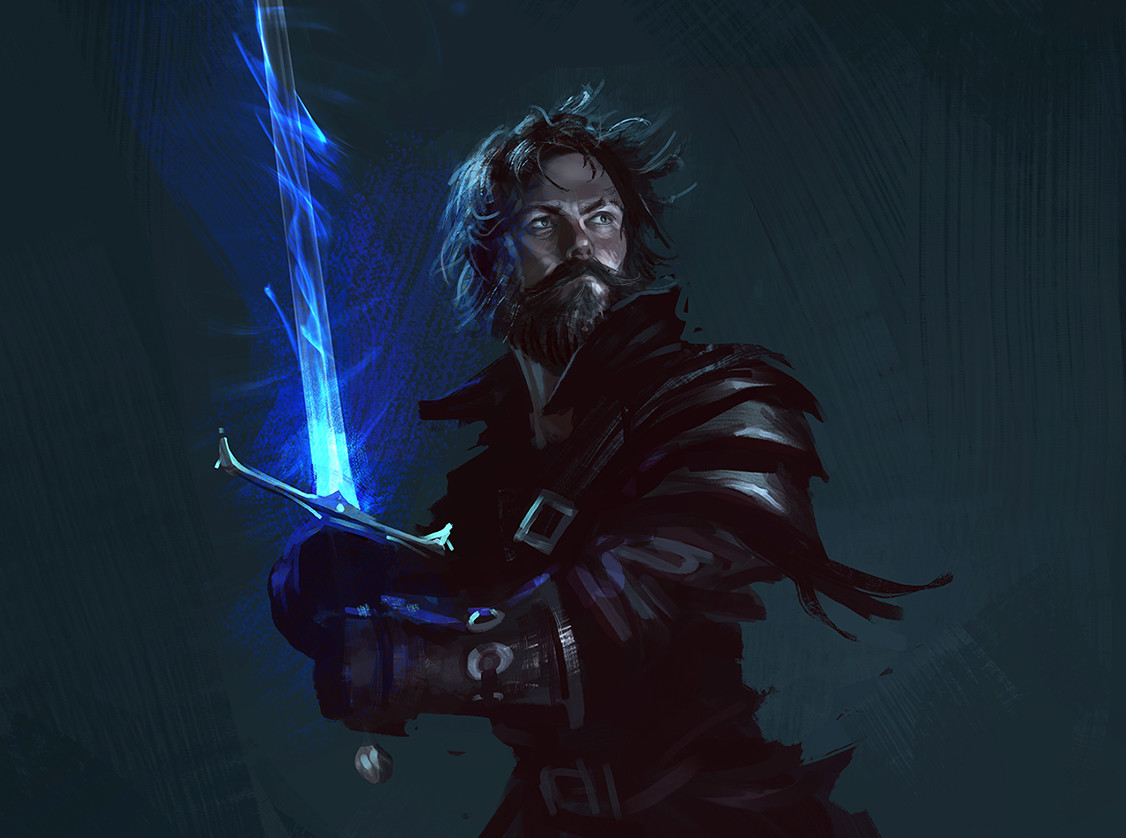


School Of Bladesinging
From its inception as a martial and magical art, Bladesinging has been tied to the sword, more specifically the longsword. Yet many generations of study gave rise to various styles of Bladesinging based on the melee weapon employed. The techniques of these styles are passed from master to students in small schools, some of which have a building dedicated to instruction. Even the newest styles are hundreds of years old, but are still taught by their original creators due to the long lives of elves.
Styles of Bladesinging are broadly categorized based on the type of weapon employed, and each is associated an animal. Within that style are specializations named after specific animal types, based on the types of spells employed, the techniques of the master, and the particular weapon used. Bladesingers who apprentice to a master typically get a tattoo of their chosen style's animal. Some bladesingers learn multiple styles and bear many tattoos, wearing a warning on their skin of their deadly skills.
Styles
Brute. Students and masters of this family use weapons rarely used by elves, relying on pure brute force. Bear style bladesingers use any sorts of hammers, ranging from clubs to mauls, using their bodies to provide cover for their allies. The wolf style relies on nothing expect their own body, grappling enemies and taking dragging them out of the fight.
Swift. Styles that employ a sword belong to this family. The lion style, the eldest, trains practitioners in the use of the longsword and doesn't favor any particular type of spells. Leopard style focuses on the shortsword and spells of illusion and stealth. Red tiger, a style just three centuries old, has its bladesingers using the double-bladed scimitar in a whirling dance of defense from which they launch into sudden leaps and attacks.
Flying. Styles that focus on the use of a hafted weapon, such as an axe or hammer, have been grouped together as bird styles, yet they vary wildly. All relatively new styles, they use weapons not typically favored by elves. Eagle style bladesingers use small handaxes, and many maneuvers in the style focus on fluid ways to throw the weapon and draw a new one. Raven style uses a war pick, and spells associated with it grant the bladesinger more agility in combat. The vulture style rely on scythes, tryping enemies as they flyby.
Venomous. Practitioners of these styles use reach, piercing of flesh weapons. Its masters punctuate their bladesong with a stunningly rapid rhythm of whip cracks, which can keep many foes at bay and allow the bladesinger space to cast the cruel spells of poison and disease favored by the style. Viper style uses a whip, despite its inelegance as a weapon, and has almost as long a history as the lion style. The scorpion style rely on the use of a rapier, piercing their opponents with precise strikes and paralyzing them.


School Of Bladesinging Features
| Wizard Level | Feature |
|---|---|
| 2nd | Choir Of Swords, Bladesong |
| 6th | Song Of Celerity, Song Of Fury |
| 10th | Song Of Defense |
| 14th | Song Of Victory |
Choir Of Swords
When you adopt this tradition at 2nd level, you gain proficiency with light armor and you choose a bladesinging style, gaining its feature. If you're proficient with a simple or martial melee weapon, you can use it as a spellcasting focus for your wizard spells.
You also learn the Sword Burst cantrip, which doesn't count against the number of wizard cantrips you know.
- Bear. You gain proficiency with Mauls, Greataxes and Greatswords. You also gain proficiency with Medium Armor, ignoring the bladesong's limitations to such armor types, and can use your Intelligence instead of your Dexterity to calculate its bonuses.
While under the effects of the Bladesong, you gain a number of temporary hit points equal to your Wizard level at the start of your turn, which lasts until the Bladesong ends.
- Wolf. You gain proficiency with Improvised Weapons and gain the Unarmed Fighting Fighting Style. While you are not wearing any armor, your armor class equals 10 + your Strength modifier + your Proficiency Bonus.
While under the effects of the Bladesong, you have advantage on Strength (Athletics) checks.
- Lion. You gain proficiency with Longswords. You also gain proficiency with Medium Armor, ignoring the bladesong's limitations to such armor type, and can use your Intelligence instead of your Dexterity to calculate its bonuses.
While under the effects of the Bladesong, you can make one weapon attack as a bonus action if you took the attack action on the same turn.
- Leopard. You gain proficiency with Shortswords. You can take a bonus action on each of your turns to take the Disengage or Hide action.
While under the effects of the Bladesong, you have advantage on Dexterity (Stealth) checks.
- Red Tiger. You gain proficiency with Scimitars and Double-Bladed Scimitars. You gain the Defense Fighting Style.
While under the effects of the Bladesong, when a creature you can see attacks a targets you, you can use your reaction to impose disadvantage on the attack roll.
- Eagle. You gain proficiency with Handaxes. They gain the Finesse property while you use them and you gain the Thrown Weapon Fighting Fighting Style.
While under the effects of the Bladesong, any weapon returns to the your hand immediately after it is used to make a ranged attack.
- Raven. You gain proficiency with War Picks. While you wield this type of weapon, it gains the Finesse and Versatile (1d10) properties. You can take a bonus action on each of your turns to take the Dash action.
While under the effects of the Bladesong, you gain an additional 10ft to your movement speed.
- Vulture. You gain proficiency with Glaives and Sickles. You also gain proficiency with Medium Armor, ignoring the bladesong's limitations to such armor type, and can use your Intelligence instead of your Dexterity to calculate its bonuses.
While under the effects of the Bladesong, you can use a bonus action to try to shove a creature within 5 feet of you with your weapon.
- Viper. You gain proficiency with Whips. It's reach increases by 10ft while you use it.
While under the effects of the Bladesong, creatures provoke an opportunity attack from you when they enter the reach you have with this weapon.
- Scorpion. You gain proficiency with Rapiers. You gain the Blind Fighting Fighting Style.
While under the effects of the Bladesong, your attacks score a critical hit on a roll of 19 or 20.


Bladesong
Also at 2nd level, you can use a bonus action to start the Bladesong, which lasts for 1 minute. It ends early if you are incapacitated, if you don medium or heavy armor or a shield. You can also dismiss the Bladesong at any time (no action required).
While your Bladesong is active, you gain the following benefits:
- You gain a bonus to your AC equal to your Intelligence modifier (minimum of +1).
- Your walking speed increases by 10 feet. At 6th, 10th, and 14th level it increases by an additional 10ft.
- You gain a bonus to any Constitution saving throw you make to maintain your concentration on a spell. The bonus equals your Intelligence modifier (minimum of +1).
You can use this feature a number of times equal to your proficiency bonus, and you regain all expended
uses of it when you finish a long rest.
Song Of Celerity
Starting at 6th level, whenever you roll for initiative and aren't surprised, you can choose to immediately use your Bladesong feature.
Song Of Fury
Additionally, at 6th level, you can attack twice, instead of once, whenever you take the Attack action on your turn. Moreover, you can cast one of your cantrips in place of one of those attacks.
Song Of Defense
When you reach 10th level, you gain resistance to non-magical bludgeoning, piercing, and slashing damage while your Bladesong is active.
Art Credit
Zeefein Bladesinger, by Tomasz Chistowski
Hael'wyn Arcanus, by Matt Forsyth
Ciri - Gwent Card, by Anna Podedworna
Daily sketches/paintings - week #47, by Tomasz Chistowski
Song Of Victory
Finally, at 14th level, choose a bladesinging style, gaining its feature. You can choose the same style you selected at 2nd level or a different one.
- Bear. While under the effects of the Bladesong, allied creatures within 5ft of you are considered under Half Cover.
- Wolf. While under the effects of the Bladesong, a creature that is currently being grappled by you is considered to be Restrained.
- Lion. While under the effects of the Bladesong, you can use your Intelligence modifier in place of your Dexterity modifier when making Dexterity checks and Dexterity saving throws.
- Leopard. While under the effects of the Bladesong, while in darkness, you are invisible to any creature that relies on darkvision to see you in that darkness.
- Red Tiger. While under the effects of the Bladesong, when you are subjected to an effect that allows you to make a Dexterity saving throw to take only half damage, you instead take no damage if you succeed on the saving throw, and only half damage if you fail.
- Eagle. While under the effects of the Bladesong, you gain a bonus to damage rolls equal to your Proficiency Bonus.
- Raven. While under the effects of the Bladesong, during your turn, if you make a melee attack against a creature, that creature can't make opportunity attacks against you for the rest of your turn.
- Vulture. While under the effects of the Bladesong, whenever you knock someone prone, it is Stunned until the end of your current turn.
- Viper. While under the effects of the Bladesong, once per turn, when you damage a creature with a weapon attack, you can force it to make a Constitution Saving Throw. On a failure, the creature is poisoned until the end of it's next turn.
- Scorpion. While under the effects of the Bladesong, once on each of your turns when you miss with a weapon attack, you can make another weapon attack as part of the same action.